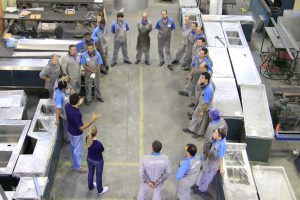 “No need to re-invent the wheel.”
“No need to re-invent the wheel.”
How often have you heard this common expression? And, how often have you just shrugged and agreed with it? Likely, it’s because it doesn’t make any sense to spend time and effort re-creating something that’s already just fine. No need to exhaust any brain cells on that concept.
There are times, though, when is better to re-invent the wheel. A basic method might already exist. That doesn’t mean you can’t optimize it. But, how do we identify those opportunities?
What’s At Your Core?
Innovative companies make peace with the fact that they cannot and should not be good at everything. They identify their core value to customers. Then they innovate inside that core.
Everything outside the core doesn’t fall into neglect. But, it only gets enough attention and resources to be what’s known as “fit-for-purpose.” By this, we mean that the service needs fulfill the expectations of both you and your customers.
Need an example? Apple knows its core isn’t word processing. The company innovates inside its core. iPhones get sleeker and Siri gets more snarky. Laptops get smaller, lighter, and more powerful than desktop computers. But, don’t look for an elegant and beautiful reinvent-the-wheel-word processing program.
We have Apple’s Pages software, which is nothing to rave about. It’s fit-for-purpose.
At the core of Apple’s business engine are those iPhones and laptops. Operational activities fueling innovation here are critical. It’s profitable to find ways to re-invent the wheel in these areas, as well.
Where Things Connect
Let’s stick with Apple for just a little while longer. We already know they innovate inside their core. This doesn’t keep them from increasing the size of their core by finding ways to pull related products and services into it.
We love our iPhones. Cumulative sales just surpassed the billion dollar mark. While growth is slowing there, revenue from all the music and apps we download from the reinvent-the-wheel record store known as iTunes generated $5.5 billion in the first quarter of 2016.
Clearly, reinventing the wheel in this area to pull it into the core was a good idea. Still, the Apple didn’t fall far from the tree. (And that will be the final Apple bon mot, we promise!) Pick and stick innovation is critical to success. It’s how you become a market leader. Many companies who’ve found themselves in this space got there by design. They made the conscious decision to be not so great at some things so they could focus their efforts and be great at others.
This is a philosophy we can get behind. We do so not only because it just makes good business sense to us – but also because we see it in action every day with our own customers.
They come to us looking for solutions. Our products are outside the core of what they’re good at. They’re not concerned. They won’t have to reinvent the wheel.
Thanks to nearly 40 years in business, we’ve got over 5,000 dies in house. That’s over 5,000 reasons not to re-invent the wheel.

